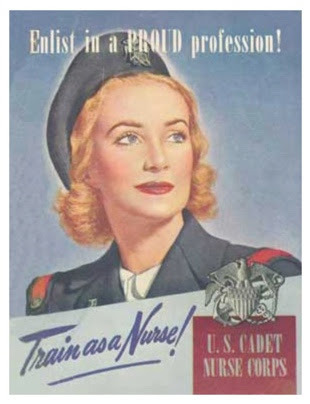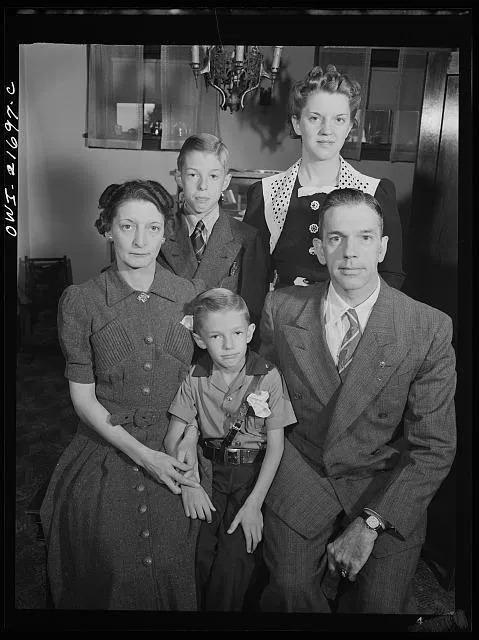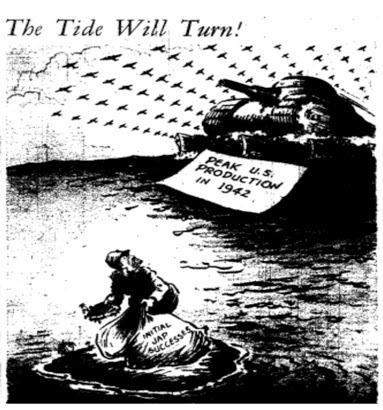Text
Follow us on other platforms!
Instagram - RochesterHomefrontWWII
Facebook - Search Rochester Homefront - World War Two
Twitter - @RochesterWWII
Pinterest - Rochester Homefront WW2
Wordpress - https://rocwwii.home.blog/
0 notes
Text
Rochester’s Aid to U.S. Cadet Nurse Corps

Rochester’s aid to the War Effort included training and schooling for nurses that we sent off. The United States Cadet Nurse Corps was a program established by the Federal government in 1943. Sixteen schools of nursing were in Rochester alone. Check out more information on the Rochester’s Regional Health website for more information here.
0 notes
Text
Women Factory Workers in Rochester

Operating the heavy machinery in Bausch & Lomb meant wearing goggles, heavy gloves, and staring through a protective glass shield. It was considered strictly a man’s job, until the war and the men went off to fight. According to Arsenal of Freedom, Part 2, by Bob Marcotte,This wasn’t the only “man’s job” that Rochester area women handled during the war. "They welded, barges, tankers, loaded freight trains,operated cranes, and did a host of other essential war work."
More information on this can be found here.
0 notes
Text
Wanted: Someone who likes Foreigners

Florence D. Alexander (b. 1872-1873 - d. 1952) was the Chairman of the Americanization Committee of the Daughters of American Revolution, Irondequcit Chapter. She was believed to be the only independent woman immigration and naturalization counselor in the United States. She obtained her first job by responding to an advertisement stating, “Wanted: Someone who Likes foreigners.” She lived at 25 Reynolds Street in Rochester, New York where she created a school for those who wished to become U.S. citizens. For years a class of twenty five new or future citizens, would meet every Monday night at her home and “free of charge, she taught English and government, interpreted current events, history, the Constitution, and American customs.” She also helped families reunite with other family members who had already immigrated to the states and helped correct any corrupt practices going on with American foreign service officers who were asking for bribes if someone wanted their visa. Alexander held meetings throughout the war and even mentioned that immigrants who came to the United States in the 1940s were "better educated than earlier generations—parents and grandparents of present-day Americans." Alexander eventually went back to school at the age of 73, still while continuing her practice. She passed away just a few years later on February 3rd, 1952.
*Sources include newspaper articles from the time found on fultonhistory.com.
0 notes
Text
The Babcock Family

In January of 2016 a woman named Jennifer Morrisey found a collection of photographs on the website for the Library of Congress called “Rochester, New York. The Babcock’s, a typical American war workers family.” This collection of 38 photographs were apparently taken in 1943, in the midst of World War II, by Ralph Amdursky a Rochester local who studied photography at Syracuse University and Rochester Institute of Technology. Amdursky worked as a photographer for Democrat & Chronicle beginning in 1933 and would also did work for publications such as Life Magazine. The photographs of the Babcock family depict Mr. and Mrs. Babcock and their three children, Earl, Howard, and Shirley, as they go about their lives in Rochester. This includes scenes of them at work, at home, and at school, depicting the ideal American family during the war. The photographs were taken for the the U.S. Office of War Information, and may have been taken with the intention of using them as propaganda to promote the lifestyle depicted in them.
Read about Jennifer Morrisey’s findings directly and view several of the photographs from the collection here.
0 notes
Text
Production In Rochester: Winning The War

Like dozens of cities across the United States, Rochester’s production during World War 2 exploded overnight, resulting in an incredible amount of resources and effort being made towards winning the war. But what companies were doing all of this work? How did Rochester workers, factories and products help win the war effort? How was a city of Rochester’s size prepared to meet the ever rising demands of a war that spanned almost every continent and over fifty countries? All of these questions and more are answered within the first part of a two part article titled “Arsenal of Freedom: Part One: Rochester Products that Helped Win World War II,” which can be found here.
This article was published in 2004 and written by Bob Marcotte, it was a part of Rochester History, a quarterly published collection created by the Rochester Public Library.
1 note
·
View note